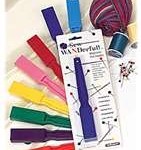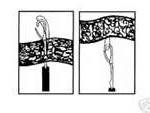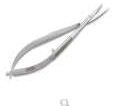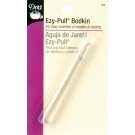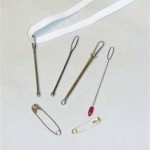 What exactly is a crochet hook? They have been defined as a needle with a hook at one end used for drawing yarn or thread through knotted loops. Whereas in knitting, you use two needles to complete a project, in crocheting you basically use only one hook to make your stitches.
What exactly is a crochet hook? They have been defined as a needle with a hook at one end used for drawing yarn or thread through knotted loops. Whereas in knitting, you use two needles to complete a project, in crocheting you basically use only one hook to make your stitches.
The size of a crochet hook is measured by the thickness of the tool’s shaft which will ultimately relate to the size of the stitches created. So in a nut shell, the larger and thicker the crochet hook, the larger and thicker your stitches will be. With that in mind, you will more than likely need a thicker yarn when crocheting with a larger hook.
You will find several different systems used to determine the size of a crochet hook. The American (letter/number system), Continental (metric system) and UK system. Check out Crochet Hooks You for a very informative crochet hook conversion chart, click on sitemap and then click on chart. Most of the time, the more common aluminum hooks are imprinted with both the letter/number size and the numeric metric size. This is useful because some patterns say to use a size G or specify a 3.25mm crochet hook. Just remember, the higher the number or farther down the ABC ladder, the larger the hook. Oddly enough, steel hooks are really the opposite. The higher the number, the smaller the hook.
Karp Styles Crochet & Knitting is a wonderful website giving you intricate details about various hooks and their qualities.
I know it is important on some patterns for you to be exact when it comes to your hook size and yarn weight so that your gauge matches with the pattern requirements and your crochet project fits perfectly. However, depending upon the pattern and the outcome you want, it can be fun to experiment using different size hooks with different weights of yarn. Keep in mind, if you take a thread pattern and want to use a 3ply yarn even if you use the recommended hook size, you will probably need to purchase more yarn than what the pattern calls for. Don’t be afraid to crochet “out of the box”!!
Crochet hooks are available in a wide variety of materials too; aluminum (probably the most common and readily available), plastic, acrylic, steel, wood (bamboo, rosewood, birch, and other exotic woods). Laurel Hill Online has a wide selection of handmade crochet hooks.
If you are a beginner or are wanting to teach a child how to crochet, probably a large sized aluminum hook (N – 9.00mm) would be a good one to start with. They are light, have a large tip for grasping the yarn, and the yarn will work off the hook with minimal effort.
However, if you’re a crochet “junkie” like me, then maybe it is time to treat yourself to an exotic wood crochet hook or put that request on your wish list.
HAPPY CREATING!!
Disclaimer: This post contains affiliate links – “small commission earned”



